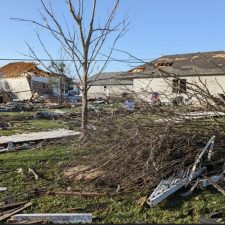Some accident cases are simple. One person was in the wrong and caused injuries to another person. The easiest example to consider is a rear-end collision where one car collides with another car who is stopped at a stop sign.
But, it can get more difficult when there are multiple people or companies who actually did something wrong. Making the determination of who should be responsible is where comparative fault comes into play.
What Exactly Is Comparative Fault?
Louisiana uses the comparative fault system in negligence cases. This means that the jury or the judge has to decide who is responsible for an accident and then decide what percentage of fault should be assigned to each responsible person or company. Because of this, even if you are at fault for your own accident, you can still recover damages, but your damages will reduced by your percentage of fault. This may seem complicated but can be explained with two examples:
Example 1: Assume that there is an accident involving three different vehicles: one stopped at a stop sign (Car 1), one who rear-ends the vehicle at the stop sign (Car 2), and one who then rear-ends that vehicle (Car 3), pushing it back into the vehicle who was stopped at the stop sign. In that scenario, it is likely that Car 2 and Car 3 will be found responsible for the accident and could each be found to be 50% at fault for the damage to Car 3.
Example 2: Assume that instead of being at a stop sign, Car 1 abruptly slows to make a left hand turn without putting on its blinker. Car 2 rear-ends car Car 1 and Car 3 rear-ends Car 2, pushing it into Car 1 again. Here, all three vehicles will likely share some portion of the fault and would receive an allocation from the jury or judge.
What Does Comparative Fault Do to Damages?
Every injured person has one set of damages (pain and suffering, medical bills, lost wages, etc.), which is neither increased nor decreased by comparative fault allocations. However, the amount of the damages that can actually be recovered and from whom will depend on the fault allocation.
Going back to Example 1, assume that the injured person has $100,000 in damages. Given the fault allocations, he could recover $50,000 from the driver (and insurer) of Car 2 and $50,000 from the driver (and insurer) of Car 3. In this scenario, the injured person is able to recover 100% of his or her damages, but the liability of the drivers of the other cars are limited by the fault allocations.
In Example 2 however, the driver of Car 1 would have his or her $100,000 in damages reduced by whatever percentage of fault is given to him or her from not using a turn signal before slowing to turn. Then, he would only be able to recover from Car 2 and Car 3 to the extent of the fault assigned to each of those cars.
These examples may seem simple, but things can get very complicated, particularly when you start dealing with a number of potentially responsible parties.
Call a New Orleans Accident Lawyer Today
If you’ve been injured in accident, whether a car accident, truck accident, offshore accident, or any other kind, call The Mahone Firm today at (504) 564-7342 for a free consultation. There is no charge to discuss your case with a personal injury lawyer.






